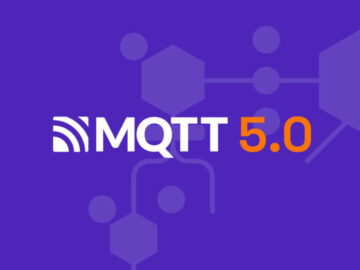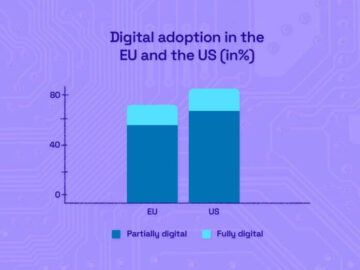
Five years ago, you could set up a low power, wide area network (LPWAN) for your IoT deployment without worrying about congestion too much. Bandwidth was cheap and plentiful. There simply weren’t many IoT devices that needed it.
That’s changed—and the radio waves are only getting more crowded. By 2031, we’ll see an estimated 800 million LPWAN connections in the world, up from just over 250 million in 2022.
The LPWAN technologies that have gotten industrial IoT this far are starting to buckle under the weight of all that traffic. The problem is toughest in dense urban areas, where multiple IoT deployments vie for use of the same bandwidth. In short, low-power IoT deployments are running into a scalability challenge.
Luckily, there’s a solution. Here’s how an alternative approach to IoT data streaming can overcome interference, support data integrity, and solve for scalability in commercial IoT.
Understanding the LPWAN Scalability Challenge
To start with the absolute basics, LPWANs move data with radio waves. Some of that radio bandwidth is licensed; you can only access it through mobile network operators (MNOs). These are your LTE-Ms and NB-IoTs, cellular connectivity technologies run by cellular connectivity companies
Many industrial IoT networks run on unlicensed parts of the electromagnetic spectrum instead—the industrial, scientific, and medical (ISM) radio band. These communications are managed by LPWAN protocols like LoRa, Sigfox, and mioty.
For IoT, ISM-based connectivity offers a lot of benefits compared to the licensed spectrum. You don’t have to manage MNO relationships. Connectivity costs less. And your IoT devices won’t burn lots of power scanning for signal as they move around.
Congestion
With more devices using ISM bands, however, congestion becomes an issue.
Regulatory agencies try to control access to these bands so all eligible users can share their advantages. In the EU, European Telecommunications Standards Institute (ETSI) standards limit how much devices can transmit on ISM frequencies.
When many devices need to transmit data on the same frequency—as is the case in busy urban areas and industrial centers—you get radio congestion. And what might happen when your IoT signal gets interrupted by another device’s traffic?
- Data arrives out of order, introducing errors.
- You lose the message entirely, failing to track a key data point.
- Instructions that trigger a device—from opening a garage door to closing a leaking pipe—never arrive.
In other words, your IoT devices can’t do what they’re built to do. With industrial and commercial IoT deployments, data loss can range from inconvenient to downright dangerous.
Traditional LPWAN technologies don’t have much resistance to interference because of the way they send messages: All at once, as a single data packet. Lose the packet and lose the whole message.
The solution for a busier ISM band is called Telegram Splitting Multiple Access (TSMA), and it operates differently.
How TSMA Gets Around Interference in LPWAN Deployments
Telegram Splitting Multiple Access is an approach to managing radio communications. It’s defined in the ETSI technical specification for Low Throughput Networks (ETSI TS 103 357).
So what does TSMA do differently?
- It divides a single message (or data packet) into multiple chunks, called sub-packets.
- It transmits those tiny subpackets multiple times, in different combinations of data.
- Each transmission travels over different radio frequencies, at different times.
- At the point of reception, software recombines the subpackets into the complete message.
With TSMA, only half of the sub-packets need to reach the receiver for the message to be delivered. That’s because of the redundant subpacket construction, in which each radio burst contains different combinations of data—but all data is represented at least twice.
It’s not a lump of data, it’s a swarm, and every particle increases the odds of successful transmission. This signal-processing technique is called Forward Error Correction (FEC), and it ensures the complete message is available to the receiver—even if some sub packets are lost along the way.
That may sound like a lot of work, but the whole operation takes place in an instant.
An LPWAN protocol that incorporates TSMA resists interference and reduces error rates compared to technologies that stick with the one-message, one-packet approach.
Other Benefits of TSMA for IoT LPWAN
How might TSMA help you scale an IoT deployment? Mostly through resistance to interference. But this technology also provides a few extra advantages that may recommend it for your use case, especially if you value battery life:
- TSMA’s much quicker radio bursts—15 milliseconds per sub-packet, compared to over a second for a traditional LPWAN packet—are particularly energy efficient. They also reduce velocity-related transmission problems for moving devices.
- Networks built with TSMA usually don’t need to use downlink acknowledgment, because the uplink is more likely to be received in the first place. Devices in traditional LPWAN systems are set up to transmit data until they get a downlink receipt. In a noisy environment, those receipts can get lost. Then the device transmits the same message over and over. That drains battery life in a hurry; but it’s not a problem with TSMA.
- TSMA reduces data loss. Data loss requires retransmission, consuming even more energy. Reliable data streams use less energy, and TSMA is designed for reliability.
This combination of factors can extend battery life—and help IoT manufacturers accurately predict energy usage, so you can advertise devices as lasting “at least a year” instead of “up to a year.” That framing is way more helpful for consumers, since “up to a year” could mean 365 days or just one.
Your next LPWAN deployment will probably be in a noisy radio environment. Telegram Splitting Multiple Access could be the key to making it work—and scaling the industrial IoT as a whole.
- SEO Powered Content & PR Distribution. Get Amplified Today.
- PlatoData.Network Vertical Generative Ai. Empower Yourself. Access Here.
- PlatoAiStream. Web3 Intelligence. Knowledge Amplified. Access Here.
- PlatoESG. Carbon, CleanTech, Energy, Environment, Solar, Waste Management. Access Here.
- PlatoHealth. Biotech and Clinical Trials Intelligence. Access Here.
- Source: https://www.iotforall.com/the-ism-band-is-getting-crowded-heres-how-to-scale-iot-anyway
- :is
- :not
- :where
- $UP
- 01
- 1
- 2022
- 2031
- 250
- a
- About
- Absolute
- access
- accurately
- acknowledgment
- advantages
- Advertise
- agencies
- ago
- All
- along
- also
- alternative
- an
- and
- Another
- anyway
- approach
- ARE
- AREA
- areas
- around
- arrive
- Arrives
- AS
- At
- available
- BAND
- Bandwidth
- Basics
- battery
- Battery life
- BE
- because
- becomes
- benefits
- buckle
- built
- burn
- busy
- but
- by
- called
- CAN
- Can Get
- case
- cellular
- cheap
- closing
- combination
- combinations
- commercial
- Communications
- compared
- complete
- congestion
- Connections
- Connectivity
- construction
- Consumers
- consuming
- contains
- control
- Costs
- could
- crowded
- Dangerous
- data
- data loss
- Days
- defined
- delivered
- dense
- deployment
- deployments
- designed
- device
- Devices
- different
- differently
- divides
- do
- does
- Dont
- Door
- each
- efficient
- eligible
- energy
- ensures
- entirely
- Environment
- error
- Errors
- especially
- estimated
- EU
- Even
- Every
- extend
- extra
- factors
- failing
- far
- few
- First
- For
- For Consumers
- Forward
- from
- garage
- get
- gets
- getting
- Half
- happen
- Have
- help
- helpful
- How
- How To
- However
- HTTPS
- if
- in
- inconvenient
- incorporates
- Increases
- industrial
- Industrial IoT
- instant
- instead
- integrity
- interference
- interrupted
- into
- introducing
- iot
- iot devices
- issue
- IT
- jpg
- just
- just one
- Key
- lasting
- leaking
- least
- less
- Licensed
- Life
- like
- likely
- LIMIT
- lose
- loss
- lost
- Lot
- lots
- Low
- Making
- manage
- managed
- managing
- Manufacturers
- many
- max-width
- May..
- mean
- medical
- message
- messages
- might
- million
- milliseconds
- Mobile
- more
- mostly
- move
- moving
- much
- multiple
- Need
- needed
- network
- networks
- next
- Odds
- of
- Offers
- on
- once
- ONE
- only
- opening
- operates
- operation
- operators
- or
- order
- Other
- out
- over
- Overcome
- packets
- particle
- particularly
- parts
- per
- Place
- plato
- Plato Data Intelligence
- PlatoData
- Point
- power
- predict
- probably
- Problem
- problems
- protocol
- protocols
- provides
- quicker
- Radio
- range
- Rates
- reach
- receipts
- received
- reception
- recommend
- reduce
- reduces
- redundant
- Relationships
- reliability
- reliable
- represented
- requires
- Resistance
- retransmission
- Run
- running
- same
- Scalability
- Scale
- scaling
- scanning
- scientific
- Second
- see
- send
- set
- Share
- Short
- Signal
- simply
- since
- single
- So
- Software
- solution
- SOLVE
- some
- Sound
- specification
- Spectrum
- standards
- start
- Starting
- Stick
- streaming
- streams
- successful
- support
- Swarm
- Systems
- takes
- Technical
- technique
- Technologies
- Technology
- telecommunications
- Telegram
- that
- The
- the world
- their
- then
- There.
- These
- they
- this
- those
- Through
- throughput
- times
- tiny
- to
- too
- track
- traditional
- traffic
- transmission
- transmit
- travels
- trigger
- try
- Ts
- Twice
- under
- unlicensed
- until
- urban
- Urban Areas
- Usage
- use
- use case
- users
- using
- usually
- value
- vie
- was
- waves
- Way..
- weight
- What
- when
- which
- whole
- wide
- will
- with
- without
- words
- Work
- world
- worrying
- year
- years
- you
- Your
- zephyrnet











